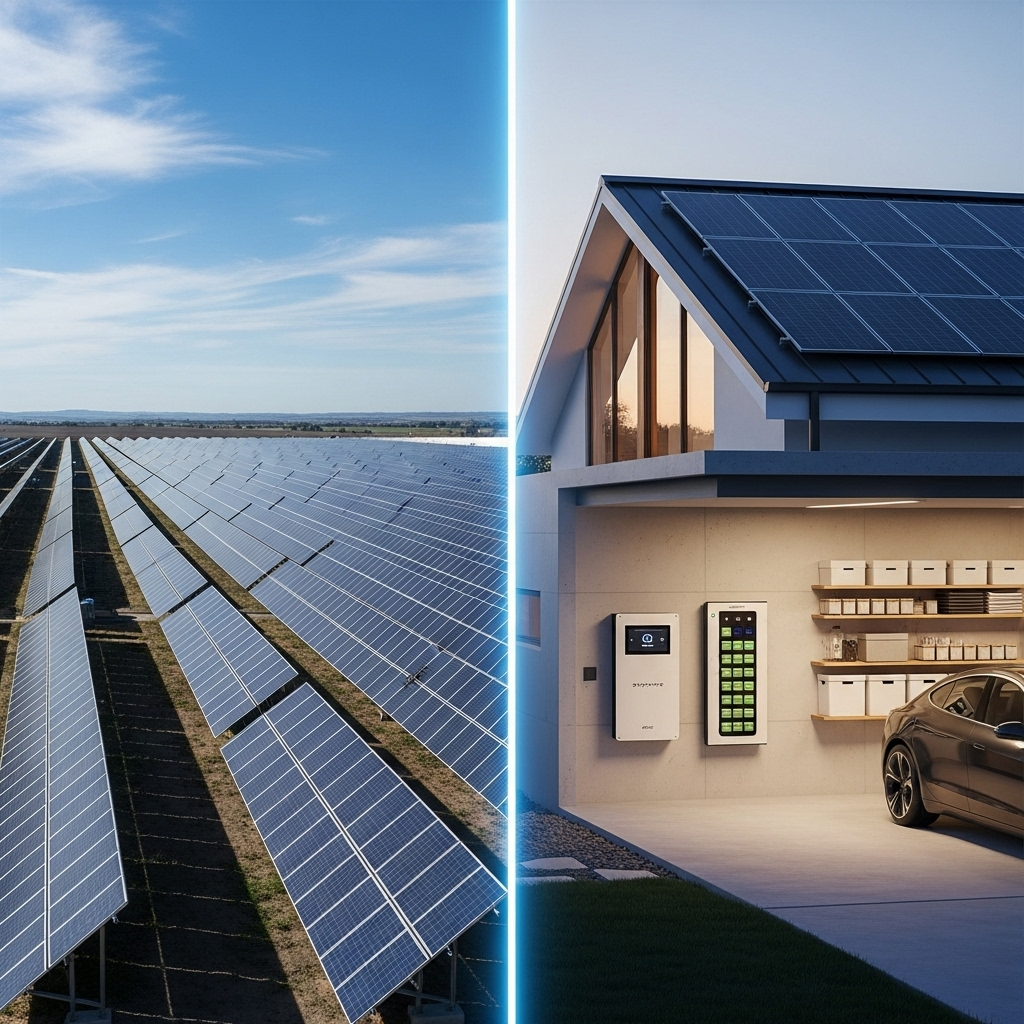The European Union's updated Renewable Energy Directive, commonly known as RED II, sets an ambitious course for the continent's energy future. With a significantly higher target for 2030, this directive is more than just a policy update; it is a clear signal for the entire renewable energy sector. For solar developers, it represents a landscape of new opportunities and strategic imperatives. This analysis breaks down what the revised 2030 renewable energy mandate means for your solar projects.
Understanding the Core Changes in RED II
The latest iteration of RED II, strengthened by the REPowerEU plan, introduces several fundamental shifts. These changes are designed to accelerate the transition away from fossil fuels, driven by both climate goals and the pursuit of energy security. Developers who grasp these nuances will be better positioned to capitalize on the coming decade of growth.
The New 42.5% Renewable Energy Target
The centerpiece of the updated directive is the legally binding target for renewable energy to constitute at least 42.5% of the EU's total energy consumption by 2030, with an aspiration to reach 45%. This is a substantial increase from the previous 32% target. According to the World Energy Investment 2023 report, such ambitious policies are providing a critical boost to investment in low-emission power. This heightened ambition directly translates into a massive, sustained demand for new solar capacity across the continent.
Streamlining Permitting Processes
Project delays have long been a significant hurdle for renewable energy deployment. RED II directly addresses this by introducing 'Renewable Acceleration Areas'. Within these designated zones, the permitting process for new projects is capped at 12 months. For repowering existing plants, the timeline is even shorter. This measure aims to clear the substantial backlog of projects awaiting approval, a challenge highlighted by IEA data showing hundreds of gigawatts of solar and wind capacity stuck in permitting queues across major European markets.
Emphasis on Cross-Border and Innovative Projects
The directive also encourages a more integrated European energy market. It includes provisions that facilitate cross-border energy projects, allowing developers to generate power in one member state and sell it in another. Furthermore, there is a clear push for innovative solutions. This opens the door for advanced project designs, such as agrivoltaics, floating solar, and, most importantly, the integration of energy storage systems to support grid stability.
Key Opportunities for Solar Developers
The aggressive targets and streamlined processes under RED II create a fertile ground for solar development. The directive provides the policy certainty needed to unlock significant private investment and expand the market in several key areas.
Expanding Market for Utility-Scale Solar
Meeting the 42.5% target is impossible without a massive build-out of utility-scale solar farms. This creates a direct and long-term opportunity for developers. While the World Energy Investment 2023 analysis notes a recent rise in the Levelized Cost of Electricity (LCOE) for solar PV due to inflation and supply chain pressures, solar remains far more competitive than new fossil fuel generation. The policy framework of RED II helps de-risk these investments, making them more attractive to financiers.
The Rise of Corporate Power Purchase Agreements (PPAs)
As corporations face increasing pressure to decarbonize their operations, the demand for renewable energy through Corporate PPAs is surging. RED II's clear targets and long-term vision provide the stability that corporations need to sign 10- to 15-year agreements. Solar developers can leverage this trend by offering tailored PPA solutions to large energy consumers, securing a stable revenue stream for their projects.
Integrating Energy Storage Becomes Standard
A grid powered by a high share of variable renewables like solar requires flexibility. Energy storage is the key to providing that flexibility. RED II's framework implicitly promotes the co-location of battery energy storage systems (BESS) with solar projects. These hybrid systems can store excess solar energy generated during the day and dispatch it during peak demand hours, enhancing grid stability and creating additional revenue streams. High-performance, safe, and long-lasting LiFePO4 (Lithium Iron Phosphate) batteries are particularly well-suited for these applications. Understanding the performance metrics of different storage technologies is crucial. Key factors like depth of discharge (DoD) and cycle life directly impact a project's long-term viability. For a detailed breakdown of these metrics, you can consult this ultimate reference on solar storage performance.
Navigating Challenges and Strategic Considerations
While the opportunities are vast, developers must also navigate a complex landscape of practical challenges. A proactive and strategic approach is necessary for success in the post-RED II environment.
Grid Infrastructure and Interconnection
Streamlined permitting is only part of the solution. The physical capacity of the grid to connect new projects remains a primary bottleneck. As noted in IEA reports, transmission constraints are a significant risk for investors. Developers must conduct thorough grid connection studies very early in the project lifecycle and engage with Transmission System Operators (TSOs) to identify and secure viable interconnection points. Projects located in areas with available grid capacity will have a distinct advantage.
Supply Chain and Cost Management
The solar industry has experienced significant volatility in material costs and logistics. While some prices, like polysilicon, have begun to stabilize, developers must build resilient financial models that can absorb potential cost fluctuations. Diversifying suppliers, securing key components in advance, and incorporating contingency budgets are prudent strategies to mitigate supply chain risks.
Local Engagement and Social License
Faster permitting does not eliminate the need for community support. In fact, as the pace of development accelerates, gaining a 'social license to operate' becomes even more critical. Developers should engage with local communities early and transparently, highlighting the economic and environmental benefits of the project. Building strong local partnerships can prevent opposition and ensure a smoother path to commissioning.
A Practical Roadmap for Solar Developers
To succeed under RED II, developers should adopt a structured approach. The following table outlines key actions aligned with the new directive.
| Phase | Key Action under RED II | Strategic Tip |
|---|---|---|
| Project Scoping | Identify and prioritize sites within 'Renewable Acceleration Areas'. | Conduct early-stage grid availability assessments in parallel with site selection. |
| Development | Prepare comprehensive documentation tailored for streamlined permitting timelines. | Integrate energy storage (BESS) into the initial project design to enhance bankability and grid services revenue. |
| Financing | Leverage the policy certainty of RED II to secure favorable financing terms. | In investor communications, emphasize the project's contribution to EU energy security and REPowerEU goals. |
| Community | Initiate transparent dialogue with local stakeholders from the outset. | Develop community benefit plans, such as local job creation or biodiversity enhancements, to foster support. |
Looking Beyond 2030
The RED II directive solidifies solar power's central role in Europe's energy mix. It is a clear mandate that provides the direction and confidence the market needs to mobilize capital and accelerate deployment. For solar developers, this is a call to action. By understanding the policy's nuances, focusing on integrated solutions like solar-plus-storage, and strategically navigating the practical challenges, you can play a pivotal role in Europe's clean energy transition while building a successful and resilient business.
Disclaimer: This information is for educational purposes only and does not constitute financial or legal advice. Developers should consult with professional advisors for guidance specific to their projects and circumstances.
Frequently Asked Questions
What is the main change in the updated RED II directive?
The primary change is the increase of the EU's binding renewable energy target from 32% to a more ambitious 42.5% of total energy consumption by 2030, with a goal to reach 45%. This significantly accelerates the demand for renewable sources like solar power.
How does RED II help with project permitting delays?
RED II introduces 'Renewable Acceleration Areas' where permitting processes are simplified and capped. For new projects in these zones, the process should not exceed 12 months. This measure is designed to tackle the significant backlog of projects currently awaiting approval across Europe.
Does RED II specifically promote energy storage?
While not mandating storage directly for all projects, RED II's ambitious targets for variable renewables implicitly drive the need for energy storage. The directive supports grid stability and flexibility, making solar-plus-storage projects more attractive and often necessary for successful grid integration and project approval.
What is the REPowerEU Plan and how does it relate to RED II?
The REPowerEU Plan is a strategy to rapidly reduce the EU's dependence on fossil fuels and fast-track the clean energy transition. It was the driving force behind raising the RED II targets, viewing accelerated renewable deployment as crucial for both climate action and energy security. As the World Energy Investment 2023 report highlights, such policies are providing a major boost to clean energy investment.





Leave a comment
All comments are moderated before being published.
This site is protected by hCaptcha and the hCaptcha Privacy Policy and Terms of Service apply.